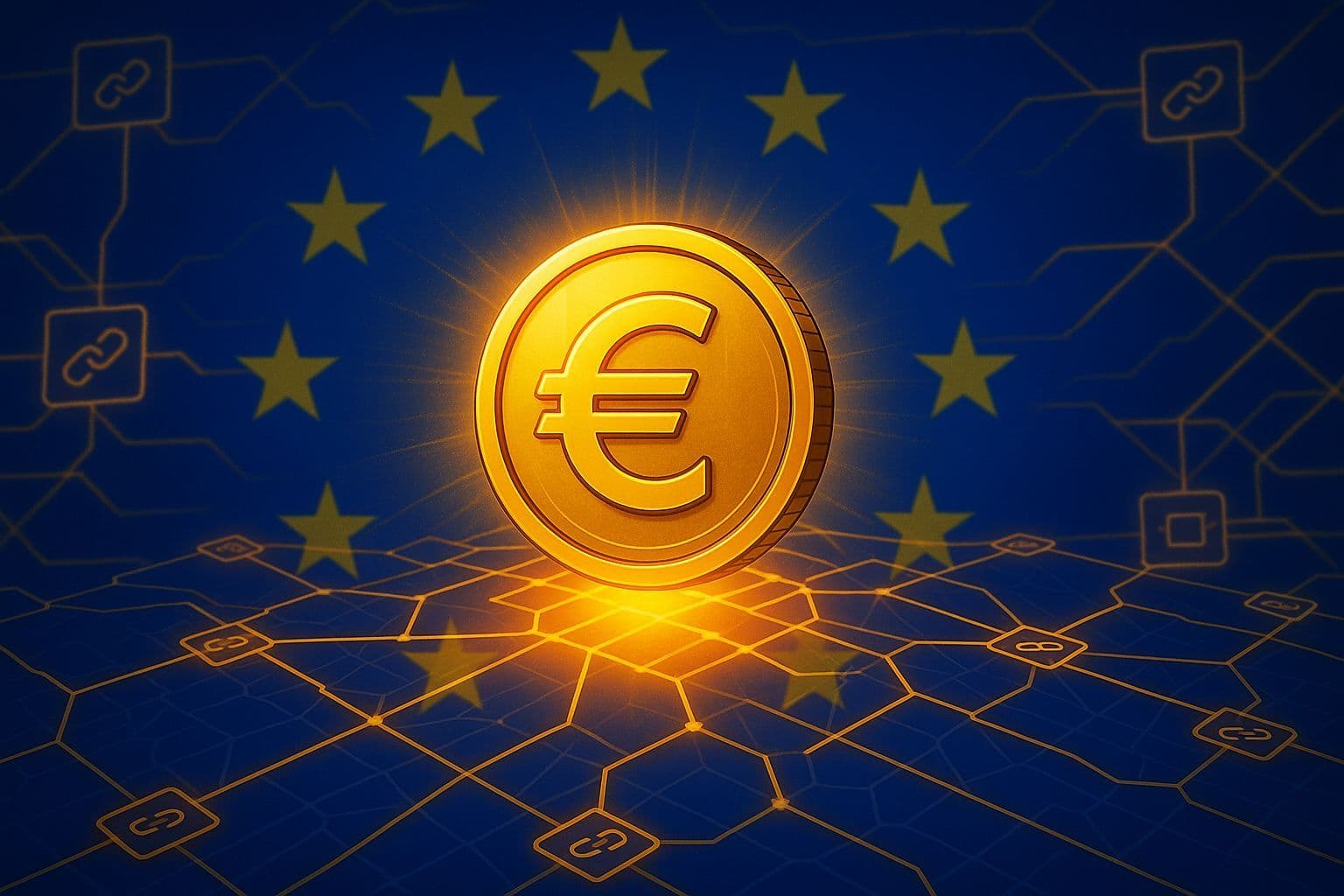A new financial race begins in Europe
Europe’s stablecoin ambitions are moving from theory to strategy. In recent weeks, eurozone finance ministers have begun drafting plans to expand euro-denominated stablecoin issuance, marking a decisive effort to reclaim digital currency leadership from U.S. dollar-backed tokens.
This isn’t just regulatory maneuvering — it’s a statement of intent. For the first time, Brussels is signaling that euro-based digital assets could become central to Europe’s financial infrastructure. If executed well, the move could reshape liquidity flows, cross-border payments, and even how Europeans interact with decentralized finance (DeFi).
According to internal EU discussions, the goal is to boost the use of euro-backed stablecoins in both regulated exchanges and blockchain-based payment systems — bringing public oversight to a sector still dominated by private U.S. issuers.
Why Europe is acting now
1. Strategic financial sovereignty
U.S.-backed stablecoins like USDT and USDC represent more than 95% of global stablecoin liquidity. European policymakers see this as a sovereignty risk — one where American networks indirectly control global digital money flows.
By promoting euro-pegged stablecoins, the EU can begin reducing dependence on the dollar, a strategic goal echoed by multiple member states including France and Germany.
2. Regulatory momentum under MiCA
The Markets in Crypto-Assets Regulation (MiCA), which enters full enforcement in 2025, provides the legal framework stablecoin issuers have been waiting for. It mandates 1:1 reserve backing, transparency, and registration — clearing a path for compliant euro tokens.
Unlike the U.S., where regulation remains fragmented, MiCA gives Europe a unified set of rules. This clarity is already attracting fintechs and exchanges eager to issue stablecoins under the EU banner.
3. The Digital Euro connection
The European Central Bank’s (ECB) ongoing work on a Digital Euro aligns naturally with this strategy. Stablecoins can act as a private-sector bridge — interoperable with the central bank’s digital infrastructure while extending programmability and DeFi utility.
For investors, this dual approach — a state-backed CBDC and market-driven euro stablecoins — signals a new era of hybrid digital finance in Europe.
What could change for markets
Liquidity dynamics
If major exchanges integrate euro stablecoins as base pairs, trading flows may begin shifting from USD pairs toward EUR pairs. This could improve liquidity for European traders and reduce currency conversion friction.
Yield opportunities
Euro stablecoins could also fuel new yield products — from tokenized government debt to DeFi lending pools — potentially making euro-denominated returns more competitive.
Regulatory competition inside the EU
Different member states are competing to attract crypto issuers under MiCA. France, for instance, has proposed fast-track licensing for compliant stablecoin projects, while smaller economies like Estonia and Malta are pitching low-cost digital asset hubs.
Risks and unknowns
Fragmentation risk
If national regulators interpret MiCA inconsistently, issuers may flock to “softer” jurisdictions. That could undermine the EU’s goal of uniform oversight.
Reserve management
Stablecoin issuers will face strict oversight on how euro reserves are held — whether in central bank deposits, commercial banks, or sovereign bonds. These details will shape trust and liquidity.
Integration with CBDC systems
It remains unclear how euro stablecoins will coexist with the Digital Euro. Will they compete, or complement each other? If interoperability is achieved, it could create a programmable money ecosystem that rivals any other in the world.
Who stands to gain
Exchanges and DeFi platforms
Binance, Bitstamp, and EU-based DEXs may benefit from higher euro trading volumes once stablecoins gain traction.
Fintechs and payment startups
Licensed fintechs can issue or integrate euro stablecoins for faster cross-border payments and cheaper settlement rails.
Traditional banks
Institutions that partner with issuers could act as custodians or reserve managers, earning new revenue streams while staying within MiCA compliance.
Investors
Traders gain hedging tools that mitigate USD risk and enable euro-based DeFi participation — an entirely new liquidity lane for the continent.
A shift in global digital money
Europe’s move to scale euro-backed stablecoins is more than a domestic initiative — it’s a strategic challenge to dollar dominance in crypto.
If successful, the EU could set the global standard for regulated, sustainable, and interoperable stablecoins. This would not only boost confidence among banks and institutional investors but could also catalyze the next wave of blockchain innovation inside the eurozone.
As one analyst at the European Blockchain Observatory put it this week:
“Stablecoins are not just about price stability — they’re about digital sovereignty. The euro’s next evolution will be programmable.”
What to watch next
- Launch of the first MiCA-approved euro stablecoins by early 2025.
- ECB updates on the Digital Euro pilot and interoperability with private stablecoins.
- Regulatory updates from France, Germany, and Estonia on stablecoin licensing.
- Exchange listings and DeFi integrations for new EUR-backed tokens.
- Liquidity migration from USD pairs to EUR pairs across major exchanges.


Comments